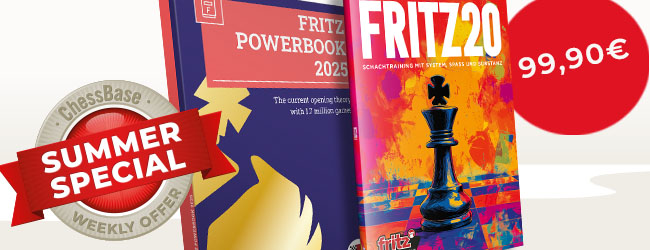The Road to Siberia
By Mehul Gohil
Not many people in the world know of John Mukabi. That kind of name is easier
to pronounce than the hard to chew on “Khanty Mansiysk”, but it
wouldn’t ring a bell or invoke the nostalgia of an old masterpiece…
surely it cannot be the Alekhine-Mukabi 1-0 boilover (Bad Pistiyan 1937, Queen’s
Gambit Declined, Orthodox Defense) as annotated by Harry Golombek? That’s
fiction.
Kenyan history is steeped in vivid story telling in the form of oral literature.
Here is an example – Caissa made the first chess brain some 50 km south
of Nairobi in the pre-historic wastelands of Olegersaille. She called it Homo
Sapiens. Then from here, a couple of hundred thousand years ago, Homo Sapiens
spread out of Africa and took the chess brain to all the other countries of
the world.

The first chess brain? Fragment of a Homo Erectus skull at the Kenya National
Museum

The Olegersaille fossil site. Littering the ground are stone tools our pre-historic
ancestors used. This is one of the candidate areas for where man emerged.
At 18:00 hrs on some odd day in September 2010, the journey will begin all
over again: five Homo Sapiens will board an air-o-plane at JKIA, out of Africa
they will fly and into Russian airspace will enter the specie Homo Sapien Chessus
Caissa… and onward to Siberia.

The Nairobi Khanty-Mansiysk Express!

Kenyan economy is experiencing a boom – another highrise goes up on
Tom Mboya

Just kidding – the players had this spectacular view of downtown Nairobi
John Mukabi or “The Beast”, as he is more affectionately called
in Kenyan chess circles, made the last moves of the Kenya National Olympiad
Qualifier on a dramatic first February 2010 weekend and booked his ticket to
Siberia and to what will be his seventh Olympiad appearance.

Dolf Beltz (right) digs deep for a solution against John Mukabi (left)

The shadow of the beast
Kenyan chessers love their Olympiad. It’s everything. It’s the
fight, it’s the mad scramble on the preliminaries, it’s the blood
war with chess friends over the board, it’s the phone calls to relatives
“I’ve made it into the team!” Or it’s the drowning of
yourself in sorrow amidst the many bottles of Tusker after you have suicide
bombed your winning position. The after game “Donner” kebabs and
nyama choma fail to digest, misery abounds in the developing constipation, and
everything becomes “the hell of hells… Gehenna… the vale of
Kai Hinnom”.

Action at the Goan Gymkhana chess club

Dr. Nikolai Van Beek, a Dutchman who fell in love with Kenya and is involved
in many local chess projects
Many around the world would not understand reasons for such strong passion
and madness. After all, here is a Kenya that lacks Elo pedigree, its chessmen
do not pawn-storm international events, the Guioco Piano is weaker this side
of the Indian Ocean than it is on the Vishy washy Chennai shores. But every
two years comes an opportunity to go on pilgrimage – the Olympiad. This
is the Chess Haj where a forgotten chess world pays homage to the familiar one
– as Anand stares into the complex depths of the Olympiad hall, looking
back at him from the far and lost aisles will be Kenyan variations. Indeed,
Caissa’s chosen ones – the Carlsen, the So, the Giri, the Nakamura
and et al – sometimes forget or are unaware of the exact proportions of
their fame – they have a worldwide fan club, right down to Nairobi’s
chess hotspots: Sandton Palace in the Tom Mboya Street neighbourhood, South
C “Golden Gate”, Downtown Pub & Restaurant, Sippers, Goan Gymkhana…

Qualifying for the Olympiad is tough! Dolf Beltz sweating

The agony of Philip Singe

Gwyen Jumba in deep thought

Liz Minayo carefully records her move

The cut throat Universities Championships

University of Nairobi players see humour in the position

Steve Ouma looking for the Siberian Tiger

The intense George Nderitu
Akello Atwoli studied the remains of his game against Steve Ouma. A clinching
swindle had put him through. I watched as Akello trapped a queen on g8, drew
invisible patterns around the board, translated his post-mortem reverie into
finger dance.

Peter Gilruth is fascinated by the shenanigans in the Akello-Ouma game

Mehul Gohil relaxes with some blitz after having qualified

Larry Khaduli shows how it's done in Kenya

The Kenya No. 1 Peter Gilruth

Akello (right) having his morning nightmares against Gilruth

The Zebras, wearing their black and white chessboard costumes, return back home
to the Nairobi national park after watching the action
Later on the two of us speculated on what would be the nature of our debut
Olympiad. As we bounced off each other one appealing chess-tourism idea after
another, Peter Gilruth, Kenya’s long standing No. 1 and our Board One,
interrupted our Russian day dreaming. Around a chess board he gathered us two
and the others (including the candidates for the board five playoff, Singe,
Ouma, Nderitu and Dolf), like a wise old Luo elder of ancient times having the
young inexperienced warriors sit around a fire, and he told us the Olympiad
was more than mere hero-worship of Kramnik. It was a responsibility, to keep
the legacy of Kanani, Andolo, Nguku and the other Kenyan Olympian giants who
went before us alive. To make the best of our little Elos and big spirit.

Our photographer Kim Bhari dissects the action with Chess Kenya committee
member Mary Kanyua

The author, Mehul Gohil, who provides live reports for a local chess forum
























